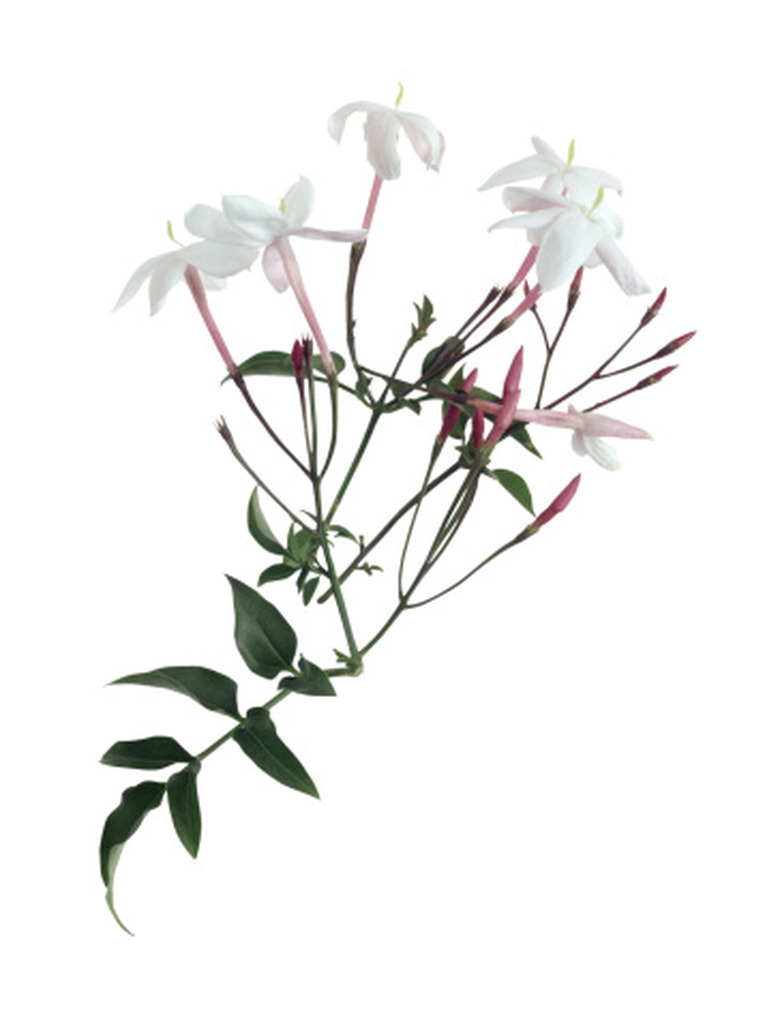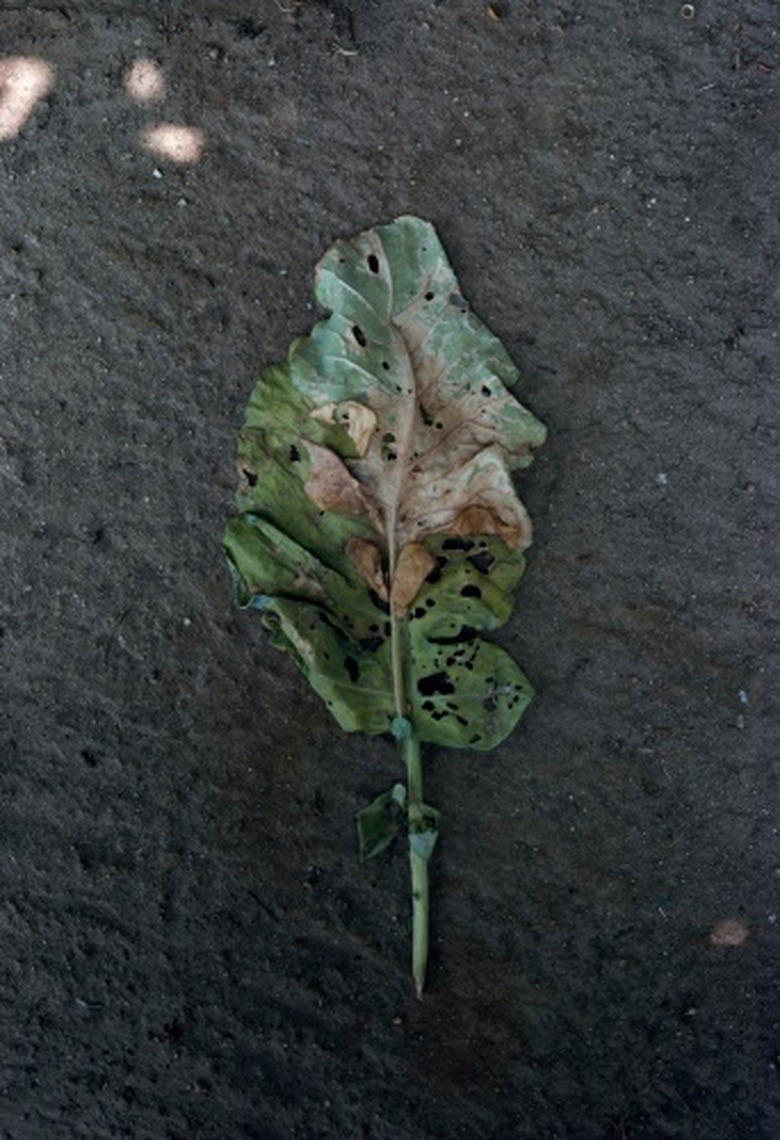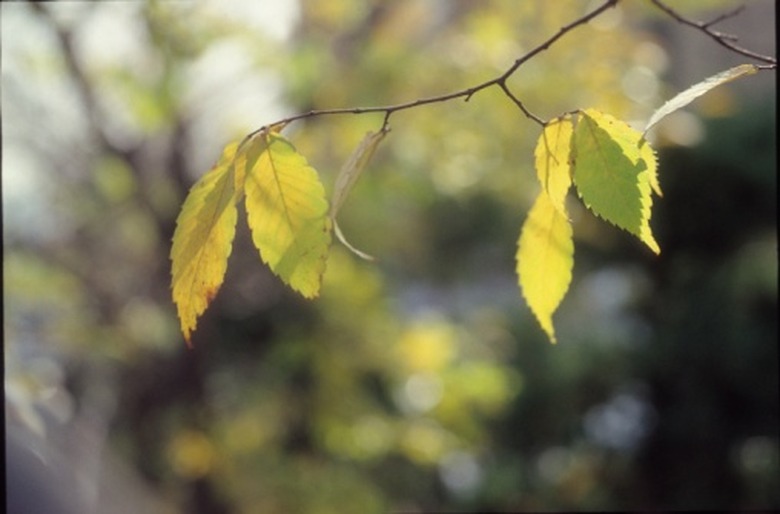What Causes Stephanotis Leaves To Yellow?
Stephanotis floribunda is known more commonly as Madagascar jasmine or simply Stephanotis. Sometimes it is called bridal wreath. Stephanotis is a tropical plant that grows as a twining vine. It is characterized by waxy white, long-lasting, highly fragrant flowers and dark shiny green leaves. Mealybug infestations and temperature changes can cause leaves to yellow and do significant damage to plants.
Mealybugs
Stephanotis is one of the key bedding plants affected by mealybugs. Evidence of mealybug infestation is seen in the sap removed from infected plants. An infestation can cause leaves to yellow and drop and may adversely affect new growth. Mealybugs excrete honeydew, a substance that sticks to leaves and stems like glue. The danger of mealybugs is that the honeydew they excrete supports growth of the black sooty mold fungus. Mealybugs are most difficult to manage in greenhouses, especially once they get established.
- Stephanotis floribunda is known more commonly as Madagascar jasmine or simply Stephanotis.
- The danger of mealybugs is that the honeydew they excrete supports growth of the black sooty mold fungus.
Mealybug Damage
Mealybugs have piercing sucking mouths, and they use the sucking mechanism to suck sap from plants. They feed in leaf and stem axils, causing yellowing of leaves and distortion of stems and leaves. The excreted honeydew covers entire leaves, creating an ideal environment for the growth of black sooty mold, a fungal disease. Prevention of mealybugs is essential for the health of Stephanotis and other plants in the area.
Mealybug Species
Citrus mealybugs (Planococcus citri) measure less than 1/8-inch in length. They are characterized by a faint gray stripe that runs down the length of their backs. They have oval bodies with short waxy filaments, and their rear filaments are slightly longer. The cottony egg sacs hold the 300 to 600 eggs that each female lays. Once the eggs hatch, the active crawlers settle on plants, excreting wax and honeydew as they feed. Until pupation, it is hard to distinguish male mealybugs from females. Longtailed mealybugs (Pseudococcus longispinus) are identifiable by the well-defined stripe running down the back of females. They have a long tail that takes up at least 3/4 of their entire body length. Unlike citrus mealybugs, longtailed mealybugs give birth to live young and do not have egg sacs. The obscure mealybug (Pseudococcus viburni) is characterized by a thick coating of wax that covers its body. It has longer filaments around the body than citrus mealybugs. The tail filaments are longer, darker and slightly larger than the longtailed or citrus mealybug. Because obscure mealybugs can tolerate colder temperatures than other species, their distribution is wider than that of the others.
- Mealybugs have piercing sucking mouths, and they use the sucking mechanism to suck sap from plants.
- The tail filaments are longer, darker and slightly larger than the longtailed or citrus mealybug.
Other Causes
Stephanotis can be grown outdoors in Hawaii, southern Arizona, California, Florida or wherever the temperatures do not dip below freezing. The waxy 1- to 2-inch long flowers have a jasmine-like fragrance and bloom prolifically outdoors during summer. Plants thrive on early morning sun but may need protection in the afternoon. Plants grown in the ground benefit from organic matter and mulching since both of these soil amendments help reduce problems from parasitic soil nematodes. In places where seasonal temperatures fluctuate widely, leaves may yellow and drop off. This is especially likely when outdoor temperatures drop below 50 degrees Fahrenheit. Growing Stephanotis in a container can minimize the extent of these problems. Plant growth slows in cooler weather when the days are shorter. Reducing the frequency of watering, during the slower growing period, is necessary.
- Stephanotis can be grown outdoors in Hawaii, southern Arizona, California, Florida or wherever the temperatures do not dip below freezing.
- Plant growth slows in cooler weather when the days are shorter.


